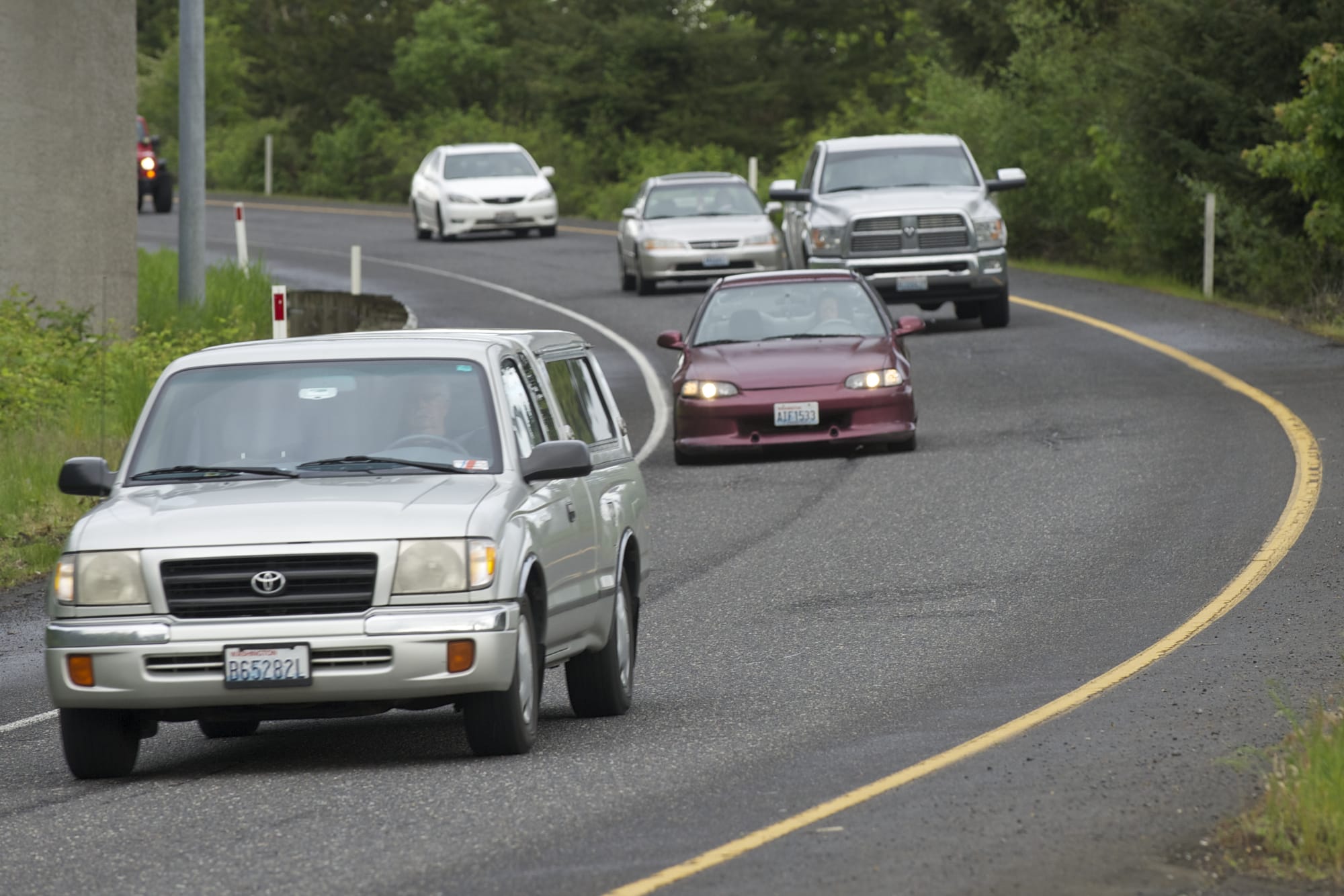Regional transportation planners are eyeing a series of small changes they hope will alleviate congestion along the Interstate 205 corridor in the coming years — without the money for big-ticket projects they say will be needed someday.
Those larger efforts remain in long-term plans. But an ongoing study of the I-205 corridor aims to identify some ways to buy time and improve conditions until more funding becomes available.
“The goal is to complete the study with some recommendations for some short-term, operational fixes,” said Matt Ransom, executive director of the Southwest Washington Regional Transportation Council.
Those might include ramp meters to stagger traffic entering the freeway at certain spots. New striping, lane reconfiguration and lengthening merge lanes are also possibilities, Ransom said.
At the RTC’s monthly board meeting this week, ramp meters dominated much of the discussion. The devices, which use alternating signals to control the flow of vehicles through an onramp, are common on Portland-area freeways. The Washington State Department of Transportation operates a meter at the ramp funneling traffic from state Highway 14 and downtown Vancouver onto southbound Interstate 5. The meters operate only at certain times of day.
Congestion trouble spots along the I-205 corridor include the interchanges at Padden Parkway, state Highway 500 and Mill Plain Boulevard. But improving traffic flow isn’t as simple as slapping a ramp meter at any of those locations. A change helping the freeway might back up the arterial connecting to it, said WSDOT regional administrator and RTC board member Don Wagner.
Wagner used Mill Plain as an example.
“A ramp meter there, if not done properly, could make matters worse,” Wagner said during the meeting. “It’s a science.”
Clark County Commissioner David Madore expressed reservations with a solution he said restricts traffic and serves only as a “band-aid.” But if meters are pursued, Madore noted, there are “smart” versions that can adapt to traffic conditions as they change in real time.
“I don’t like ramp meters — I don’t think anybody does — but especially dumb ramp meters,” he said.
The RTC study is analyzing both short-term and long-term performance of I-205 as far out as 2035. That study should be completed by the end of this year, Ransom said. Any small fixes would likely implemented by WSDOT, which oversees all state highways and interstates.
In an interview, Wagner said such projects could begin in the next couple years, but only if they snag competitive state dollars. Though they’d be relatively inexpensive changes — likely well under $1 million each — they aren’t currently funded with WSDOT’s limited resources, Wagner said.
The long term plan for I-205 is still to add capacity through expansion and interchange modifications, according to the RTC. One large project will get underway this summer, when WSDOT constructs a new partial interchange on I-205 at Northeast 18th Street and a system of ramps between Mill Plain and 18th Street. WSDOT hopes to also relieve congestion at the Mill Plain interchange as part of that $63 million effort, Wagner said. That means it likely wouldn’t be a candidate for ramp meters should planners decide to add more in the region.
The RTC’s regional plans include a half-dozen unfunded major projects along I-205 totaling more than $400 million, Ransom said. And that’s saying nothing of the dozens of projects listed on other corridors that add up to more than $2 billion — again, unfunded.
The 18th Street project kicking off this year is the last one in Clark County paid for by the gas tax increases approved in 2003 and 2005. Even if another large transportation funding package materializes soon, money for this region may be hard to come by, Wagner said.
Planners will have to adapt, he said.
“Times are changing right now,” Wagner said. “We’ve got to get more out of operating the system smart, and not necessarily looking at building our way out of this.”




